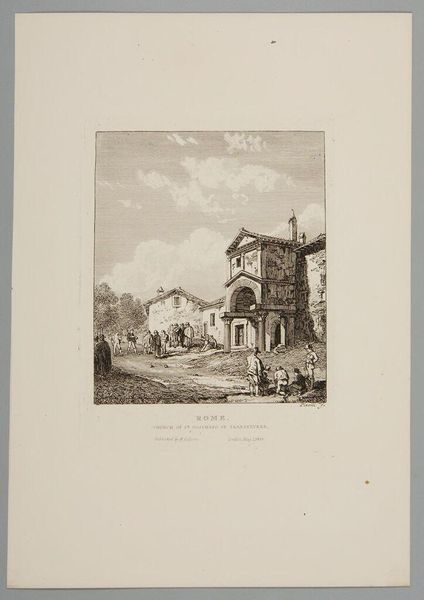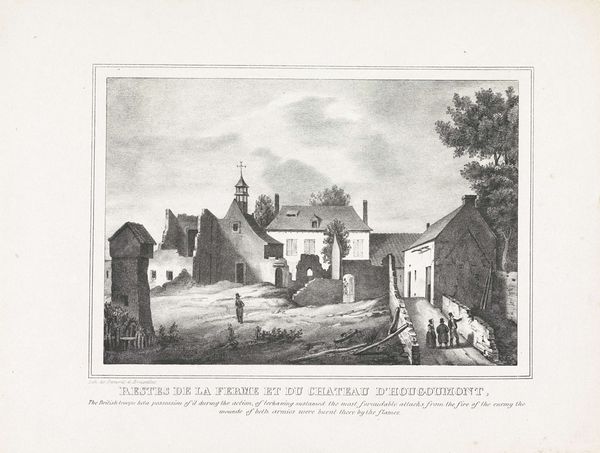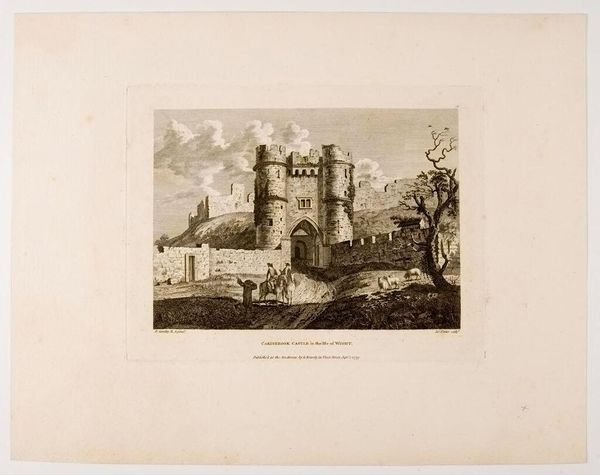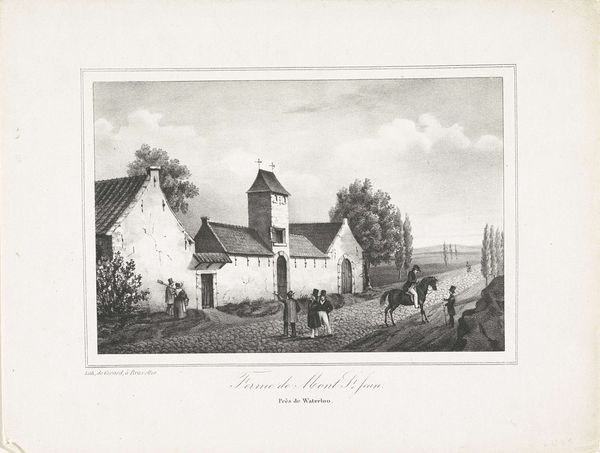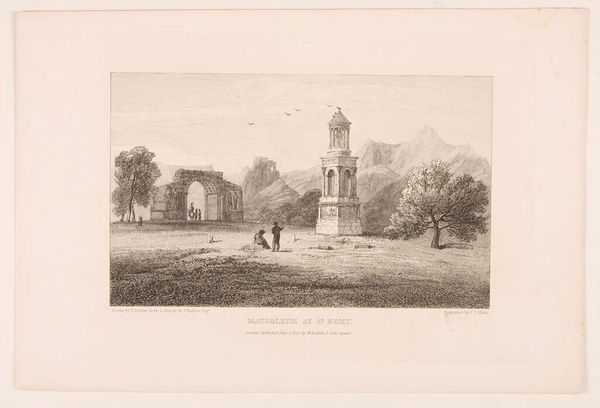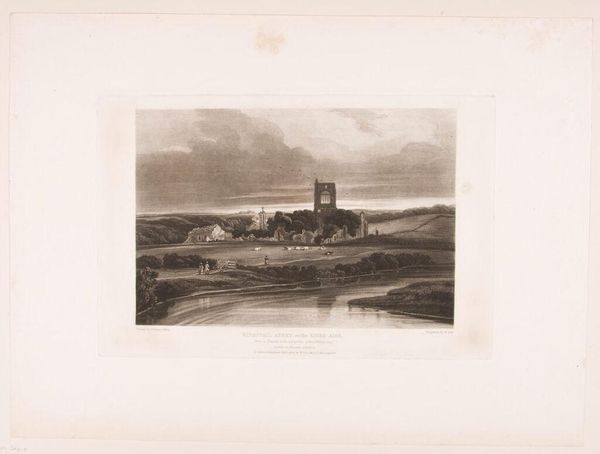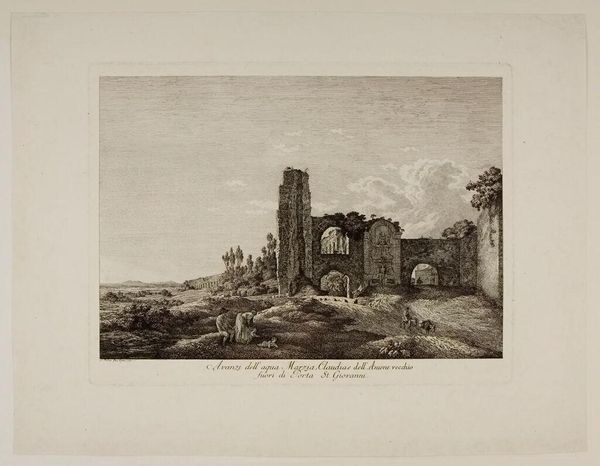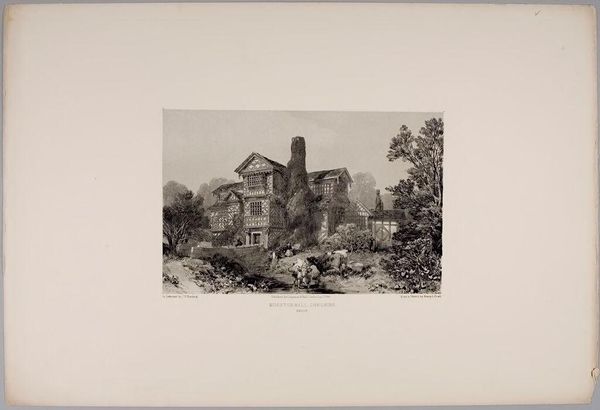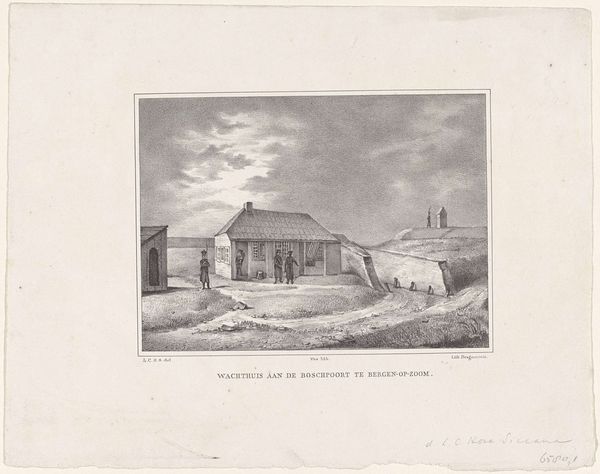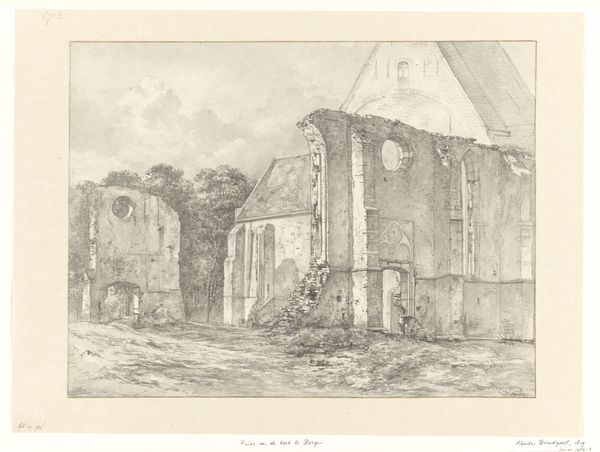
Copyright: CC0 1.0
Curator: Looking at "Cross at Sandbach" by John Byrne, I'm struck by the contrast between the rough stone and the detailed architecture. It feels almost timeless, despite the clearly defined buildings. Editor: Indeed. Byrne's aquatint work here really highlights the social and political landscape of the time. The cross itself likely served as a central meeting point, a place of gathering and perhaps even power. Curator: Right, and the aquatint process itself is fascinating. Think of the skilled labor involved in creating the etching plates, distributing the acid, and printing the final image. It makes you consider the consumption of art. Editor: Absolutely. Who was this image made for? What did it represent to them? Consider the role of religious symbolism in the era and how this imagery might have resonated with notions of community, belief, and social order. Curator: It really prompts you to consider what physical processes and labor went into producing this image. Editor: And how that labor intersects with the social and political power structures of the time. Curator: A wonderful demonstration of material meeting meaning. Editor: Precisely; a potent intersection of the artistic, the social, and the historical.
Comments
No comments
Be the first to comment and join the conversation on the ultimate creative platform.
